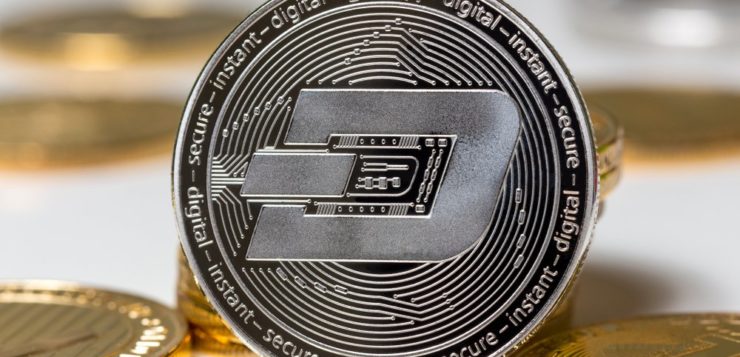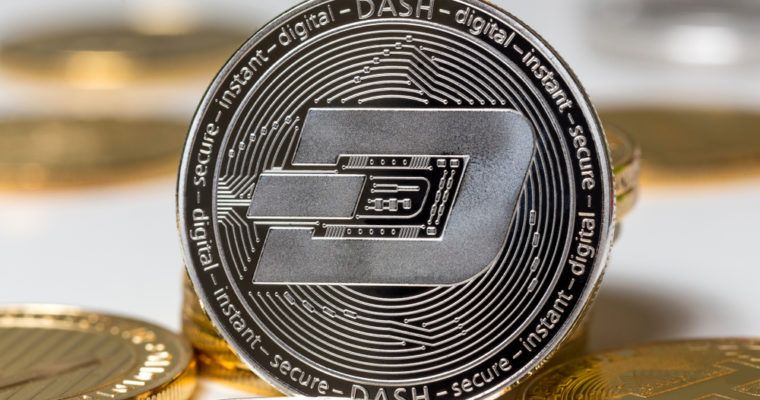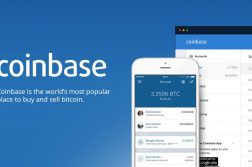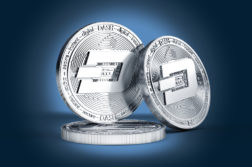2018 hasn’t been the best of years for crypto. The sprint for mass adoption has converted into a triathlon in which contestants are starting to sink in the water. One of the (multiple) issues is scaling blockchains for wider use. But if we want more users, we can’t expect payments to take longer than they do now. The technology has to be better. If consumers have to stroll idly around a store waiting for a transaction confirmation, we’re taking a backward step. Dash InstantSend transactions by default may just hold the answer.
What’s Different from Dash InstantSend Right Now?
Dash is implementing an upgrade to its existing InstantSend that will make all transactions instant, permanent, and secure. This marks a first for Dash and cryptocurrency as a whole–and could be a major step toward making cryptocurrency usable for regular merchant transactions. Neither the user nor the merchant will have to wait for transactions to be trusted and cleared.
Currently, Dash InstantSend is only available as an optional feature that causes the masternode network to lock the inputs of a transaction until they can receive 10 on-blockchain confirmations.
This feature must be enabled manually with supporting interfaces–mainly the official Dash wallets–and carries an additional fee of 10x a regular transaction (still not bad at about 1 cent USD).
However, with Dash’s soon-to-be-released 0.13 update, all simple transactions will automatically be locked using InstantSend for no additional fee and with no special action or support required on the part of the interface. This means that wallets and services that don’t support InstantSend will still be able to support it–a major step forward.
According to Dash, an estimated 90 percent of all Dash transactions will be InstantSend with the new upgrade, while the few “more complicated” ones can still use it manually and pay the extra fee.
Dash lead developer Udjinm6 speaks openly about InstantSend, to which you can find the Github specifications here.
“Auto-locking is working… well, automatically for all transactions which have 4 or less inputs (all with 6+ confirmations) and pay at least the minimal (i.e. normal) transaction fee. There is no need for any user interaction or wallet support, it’s all done on a masternode level. You’ll still be able to use “pure” InstantSend transactions by paying the per-input fee, just like today.”
Onboarding More Users by Replicating the User Experience
Through Dash’s Evolution upgrades, the controversial cryptocurrency is on a mission to become the most user-friendly blockchain-based payments method in the world. And it’s all about allowing for instant payments by replicating the user experience right now.
When I interviewed Dash’s Director of Public Outreach Joël Valenzuela earlier this year, he told me about his woes with Bitcoin back in 2016.
He said: “Sometimes, I would try to make a purchase and it would take an hour to confirm. I was wandering around the store. Other times I was trying to buy something under a dollar and paying 50-cent fees… the whole thing [using Bitcoin as a payment method]just broke down.” That’s when he turned to Dash.
Now with InstantSend, paying with Dash will be as easy as swiping or tapping a credit card, replicating the current user payment experience. Dash Head of Business Development Bradley Zastrow says:
“In my view, it’s critical, especially at the physical point of sale because this is how people are already transacting today; the user experience is already about making payments near instantly… I anticipate that it will be difficult to have mainstream adoption for payments if it takes someone five minutes at the counter to pay for their coffee.”
No kidding. In this age where most of us click out of a web page if it takes more than two seconds to load and have a concentration span shorter than a goldfish, blockchain is hardly going to be revolutionary if it requires users to take a backward step. Zastrow explains:
“Merchants can solve for that by accepting payment with fewer confirmations, but with the increase in double spend risk, it’s only exchanging one problem for another. That’s one reason why our value proposition is so powerful–with InstantSend, we can already replicate the user experience in which users and business have long grown accustomed.”
Dash Has Had a Rocky Road
Dash has had a somewhat tumultuous journey to its current ranking as the 14th largest crypto by market cap. What originally started as DarkCoin to be used on the dark web carried obscure connotations with it. However, since rebranding as Dash, it has grown phenomenally (barring a few bumps in the road including a “mining bug” that saw some 1.4 percent of the total supply end up in the possession of its founder Evan Duffield).
While Dash’s founder was slated in the media and by his critics at the time, with some claiming that Duffield had pre-mined the cryptocurrency and kept as much as 10 percent of the supply, in reality, mining was open to the public from the very beginning, and pre-mining was impossible.
Dash was originally forked from Litecoin, and a bug from the Litecoin codebase prevented the mining difficulty from adjusting as intended. Duffield scrambled to patch the bug when the coins were seen to be produced at an unexpected rate.
Internet Ape, the co-founder of the project (who has long since left and sold all his coins), mined around 160,000 during the first week, so it can be safe to assume that Duffield managed to acquire around the same number, though he later bought more through his personal finances.
He claimed to own 256,000 Dash (although that number is likely much lower today since he has been self-funding a Dash research initiative with several full-time staff members).
Despite that unfortunate incident, Dash was flying high and being called crypto’s hottest currency in 2017, holding 7th place in CoinMarketCap rankings and trading well over $1k at the turn of the year.
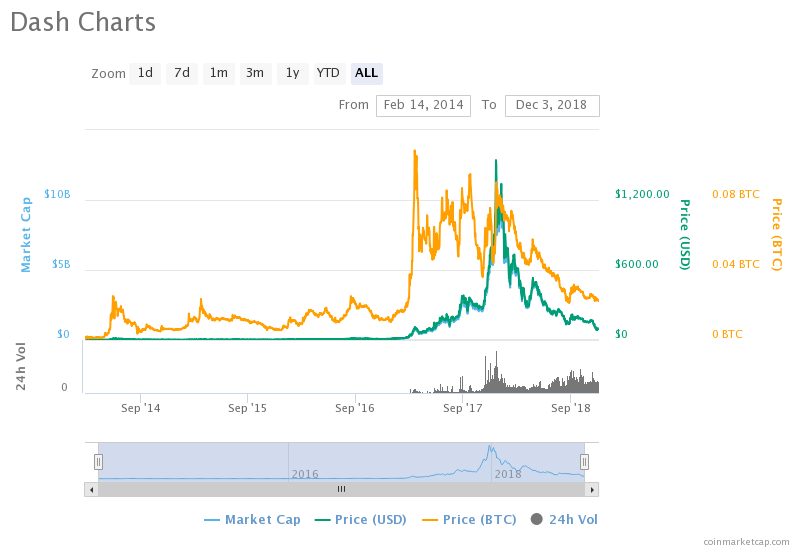
It then went on to lose some 92 percent from its all-time high. Some of these issues were put down to mismanagement, irresponsible growth, a bear market… Still… ouch.
And yet, Dash may be down but it’s not out. The decentralized autonomous organization has been working hard on user adoption and seeing significant results in countries like Venezuela, where paying with fiat currency has become all but impossible.
In a recent interview, ShapeShift founder and crypto pioneer Erik Voorhees said something that resonated with me:
“One cannot change the world in a smooth, predictable curve.”
And that certainly seems to be the case with Dash and the “Evolution” that it is rolling out in stages.
Release 0.13 isn’t the only innovation that Dash has in the pipeline. 0.14 is going to wipe out the possibility of 51% attacks on the Dash blockchain entirely.
51% Attacks No Longer Possible on Dash
The InstantSend update is compounded by a second innovation planned for release in the coming months, 0.14. This will include ChainLocks, a feature that will make 51% mining attacks that have affected coins like Bitcoin Gold and Zencash/Horizen–and which threatened Bitcoin Cash and forced the price to plummet–obsolete on Dash.
Since a 51% mining attack occurs when one single entity or miner has more hash power than the total miners combined, Dash is currently as vulnerable as any other blockchain due to its Proof of Work system.
With their latest upgrade ChainLocks, Dash will introduce Long Living Masternode Quorums (LLMQs) to implement a new protection mechanism from 51% attacks and make collateralized mining obsolete.
LLMQ based ChainLocks perform a verifiable network-wide vote of the “first-seen” rule. So, for every single block, an LLMQ made up of several hundred masternodes is selected. Each participating member signs the first block that it sees and this extends the active chain.
Once enough members (more than 60 percent) report the same block as first-seen, they create a P2P message that propagates to all network nodes. This message (known as CLSIG) can only be created if enough quorum members agree.
So if 60 percent of LLMQ members state that they have seen the block first, that means that 60 percent of the network should also have seen it first. Once this message is received it will reject any blocks that do not match the block specs in the CLSIG message. You can read more about Dash’s proposal to safeguard the network form 51% attacks here.
Essentially, says Valenzuela:
“with automatic InstantSend and ChainLocks together, a Dash transaction will be more secure in 1.3 seconds than a Bitcoin transaction after hours (if not days) of confirmations on the blockchain.”
Featured image from Shutterstock.
Get Exclusive Crypto Analysis by Professional Traders and Investors on Hacked.com. Sign up now and get the first month for free. Click here.




